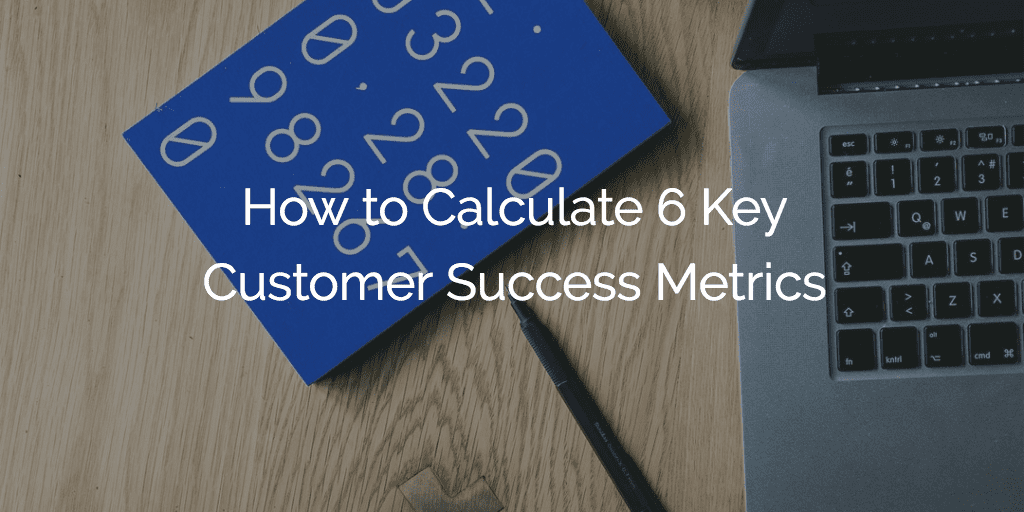Metrics are everything. They give you a benchmark to work against. They reveal weaknesses and strengths. They can be your saving grace or ultimate demise when it comes time to prove the ROI of your efforts. When it comes to Customer Success metrics, there are six that you need to have on your radar:
- Net Renewal Rate (NRR)
- Gross Renewal Rate (GRR)
- Expansion Percentage
- Logo Retention
- Net Promoter Score (NPS)
- Cost of Retention
Each of these metrics give you a deeper look into your strategy—customer sentiments, internal operations, and the list goes on. They’ll provide insights that will allow you to drive improvement and track your progress along the way.
If I only had a formula…
You did enough work to get your data, so let us take it from here. Our Customer Success Metrics Calculator eliminates the need to seek out formulas and manually solve them. All you have to do is have your data on hand, plug it into the calculator, click your heels three times, and that’s it! Okay, we were kidding about the last part, but it really is that simple. So let’s link arms and skip off into a world of NPS, NRR, GRR—oh my!

What is Net Renewal Rate?
Net Renewal Rate is the rate at which customers are renewing and expanding. It differs from Gross Renewal Rate, which only shows the rate at which customers are renewing and does not take expansion into account. The most successful companies will have an NRR over one hundred. This means they are expanding and renewing at a rate that is higher than the rate that contracts are churning.
What you need to calculate NRR:
- The dollar value of contracts up for renewal at the beginning of the period (month = MRR, year = ARR). Contracts up for renewal are those that have expired or will expire during the time period.
- Total expansion in dollars of the current time period.
- The dollar value of renewed contracts that have renewed during the current time period.
Calculate your NRR with our Customer Success Metrics calculator
What to read next:
- Renewals & Expansions: A Primer
- The Chief Revenue Officer’s Guide to Customer Success: Revenue Growth in the Helix
Gross Renewal Rate (GRR)
Customers are going to churn, it’s inevitable (even for us). Gross Renewal Rate is the percentage of contracts renewed in a given period—be that monthly, annually, quarterly, etc. As mentioned above, GRR does not include cross-sell or upsell in its equation. I will never be over 100, but the higher the better. Increases in GRR means that more people are renewing. It’s a good indicator of your Customer Success efforts—if people are renewing they are obviously getting something out of your product/service or your customer experience. Keep close track of this metric to make sure you’re delivering both!
How to calculate GRR:
- The dollar value of contracts up for renewal at the beginning of the period. Contracts up for renewal are those that have expired or will expire during the time period.
- The dollar value of renewed contracts that have renewed during the current time period.
Calculate your GRR with our Customer Success Metrics calculator
What to read next:
- 3 Critical Steps for Aligning Sales to Customer Success
- Challenging Your Customers Can Backfire: Why a Provocative Approach Falls Short in Two Critical Conversations
Expansion Percentage
Expansion Percentage is one of the best indicators of the health of your business. If customers are purchasing more of your products/services, you’re obviously doing something right! Acquiring new logos is an expensive necessary evil. You have to prospect, nurture, and be there throughout the entire sale cycle before you can add them to your bottom line. Selling to existing accounts is a much cheaper source of new revenue and can be an untapped source of growth for your company. This can be done through upsell or cross-sell into other products/services. Expansion Percentage will indicate how effective your efforts are in this area. You want it to rise over time and contribute to overall revenue growth.
How to calculate Expansion Percentage:
- Total revenue in a given time period.
- Total expansion revenue in dollars of the current time period.
Calculate your Expansion Revenue with our Customer Success Metrics calculator
What to read next:
Logo Retention
Logo Retention shows retention in terms of customers lost, instead of a dollar amount. This may seem less significant—if revenue is still in good shape, who cares, right? Well, if you only focus on revenue, you could be missing out on key indicators of weaknesses. Logo Retention can reveal the rate at which you’re losing customers. If you’re losing small customers left and right but your biggest client is still a customer, it’s much more convoluted when looked at in terms of NRR or GRR. For example, let’s say you round out the year above your revenue goal. But, this is because you’ve been putting a lot of resources into the high-touch relationship keeping your big rock clients renewing and expanding. However, you’ve neglected your low-touch strategies a large portion of small clients have churned. Logo Retention will bring this red flag to light and you can then use that data to put more effort into low-touch accounts or even switch focus to selling only to high-touch accounts.
How to calculate Logo Retention:
- Total number of logos at the beginning of a period.
- Total number of logos at the end of a period.
Calculate your Logo Retention with our Customer Success Metrics calculator
What to read next:
- How to Manage Your Customer Journey From the Customer’s Perspective
- 4 Critical Factors to Measure Customers’ Value Realization
Net Promoter Score
Net Promoter Score is common practice for businesses of all kinds. This widely-known metric measures and evaluates customer loyalty. It asks the simple question, “On a scale of 1-10, how likely are you to recommend our product/service to a friend?” Responses are then sorted into three buckets: Promoters, Detractors, and Passives. NPS is a reliable leading indicator of future customer behavior, including renewal, expansion, and advocacy.
How to calculate NPS:
- Number of Promoters (answered 9-10).
- Number of Detractors (answered 0-6).
- Total Number of Respondents.
Calculate your NPS with our Customer Success Metrics calculator
What to read next:
- The Essential Guide to Business Metrics
- How to Calculate Net Promoter Score to Get Deeper Customer Insights at Scale
- What’s in it for the Advocate? The Customer Marketing Dilemma
Cost of Retention
Cost of Retention shows how much you’re spending on retention annually per customer. A lot goes into this metric because many factors go into customer retention including the cost of technology, headcount, onboarding and advocacy materials, and so on. This metric will be most accurate when calculated using the total number of customers that have been retained during the year, so you shouldn’t include customers added in the current year. You may not utilize all of the factors below, but they are levers that best-in-class companies use and you’ll want to consider including in your strategy. Your Cost of Retention should decrease over time as you optimize your processes.
How to calculate Cost of Retention:
- Cost of Customer Success team: the annual spend associated with Customer Success personnel.
- Cost of Technology: the annual spend on software used to influence retention.
- Cost of Onboarding and Training Team: the annual spend implementing, onboarding, and training customers.
- Cost of Account Management Team: annual costs incurred by your Account Management team.
- Cost of CX Program: annual spend on improving CX, driving social interaction with your brand, etc.
- Cost of Customer Marketing: annual cost of your customer marketing efforts.
- Number of Active Customers: amount of customers that have been retained in the current year.
Calculate your Cost of Retention with our Customer Success Metrics calculator
What to read next:

